Polycarbonate is an incredibly useful plastic for applications requiring transparency and high impact resistance. It is a lighter alternative to glass and a natural UV filter, while its thermal insulation properties make it an increasingly popular choice for cladding and roofing. However, more than that, it can create an identity for an exterior of the building.
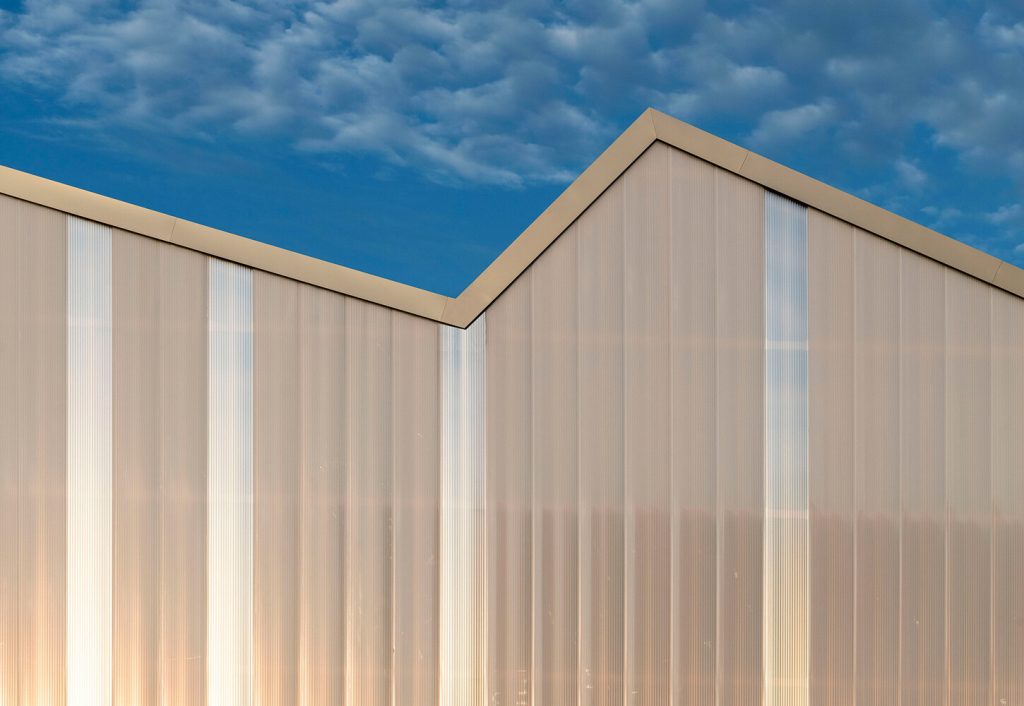
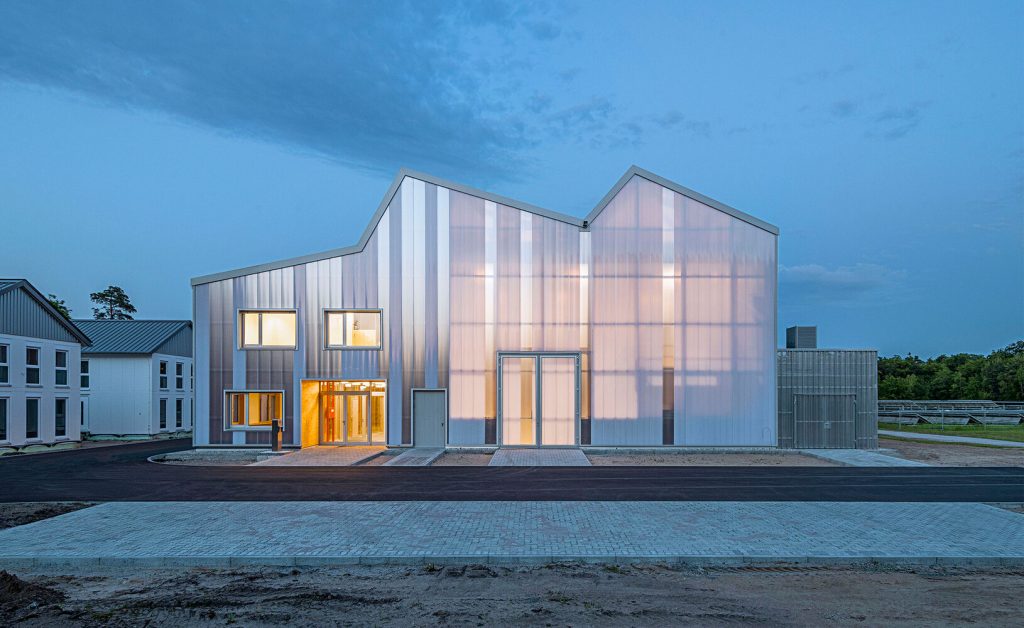
Building 688 at the Karlsruhe Institute of Technology (KIT) by Behnisch Architekten
Stuttgart-based practice Behnisch Architekten has encased a new laboratory building at the Karlsruhe Institute of Technology (KIT), Germany, in translucent polycarbonate panels. The plastic cladding allows the wooden construction on the interior to shimmer through and accommodates a column-free double-height test hall as well as a two-storey office wing with more conventional workspaces. In the central zone of access, a glass vestibule runs between the offices and the hall, allowing for views between the two.
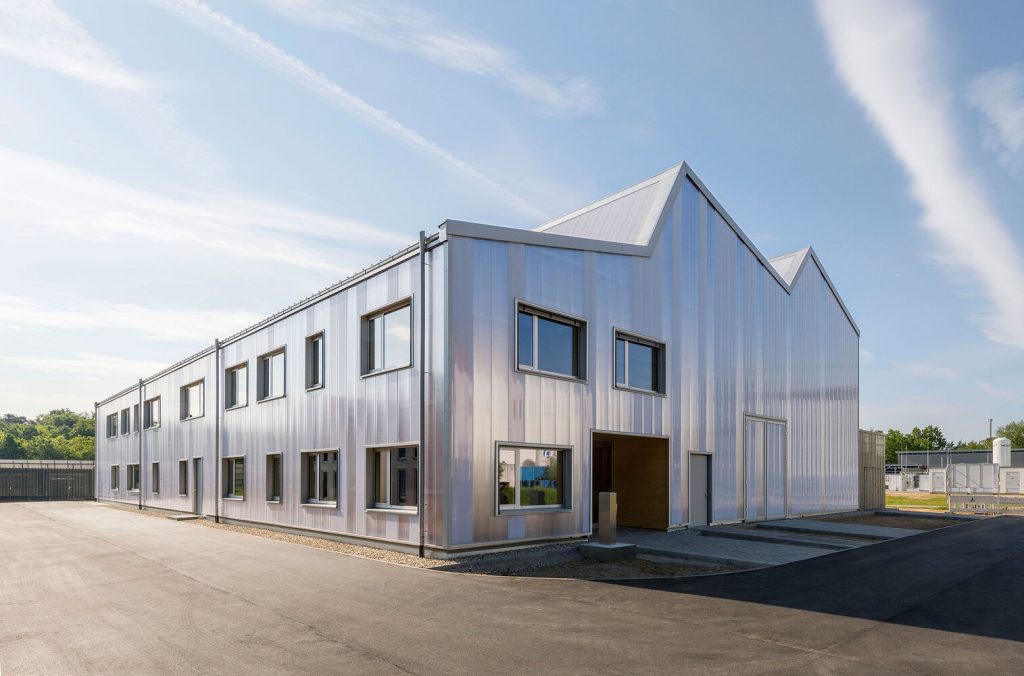
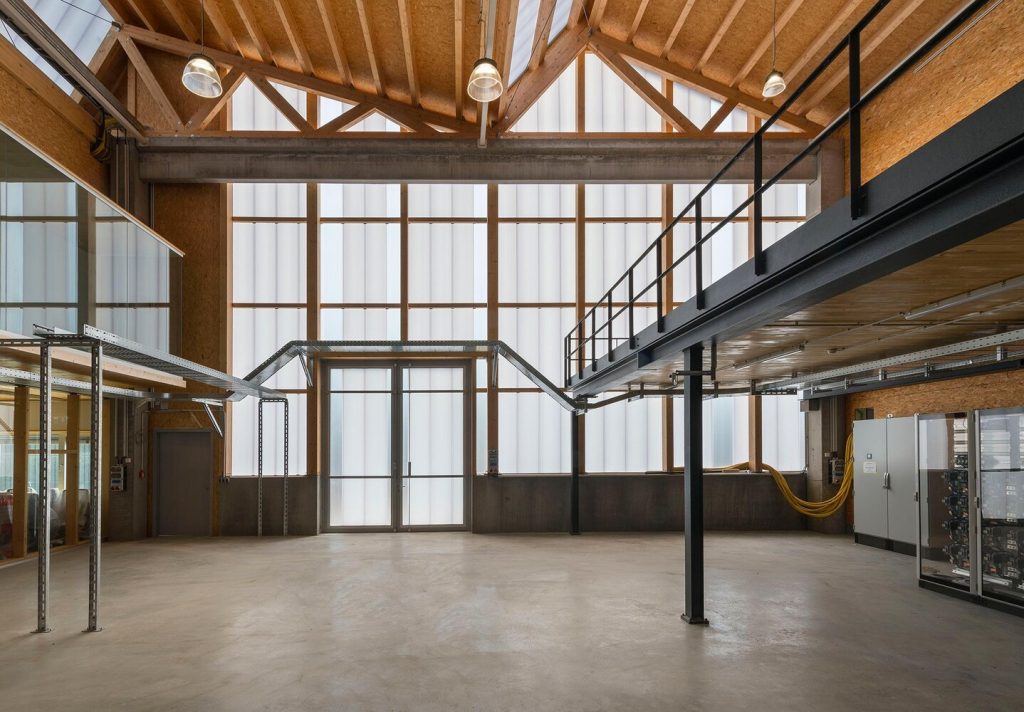
Building 688 at the Karlsruhe Institute of Technology (KIT) by Behnisch Architekten
The double-height test hall and the saw-tooth roof finished with corrugated plastic cladding reference the industrial buildings that surround the laboratory and feature wood and simple glass facades as dominant design elements. Translucent polycarbonate plates allow a consistent amount of daylight to enter the entire test area, while in the office spaces the translucent panels are lined internally with wood, thus creating an opaque, silvery exterior marked by small windows set in specific places of the facade. These openings enable a selective illumination of the interior spaces with their unobtrusive design. At night, the cladding creates a lantern-like glow from the test hall.
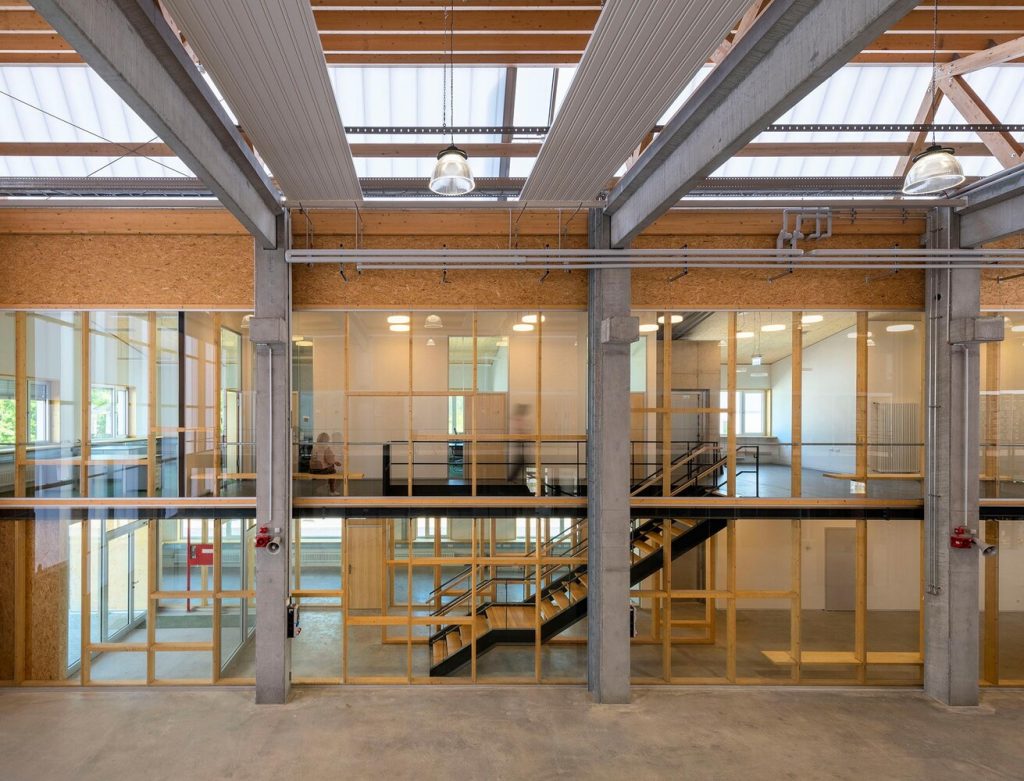
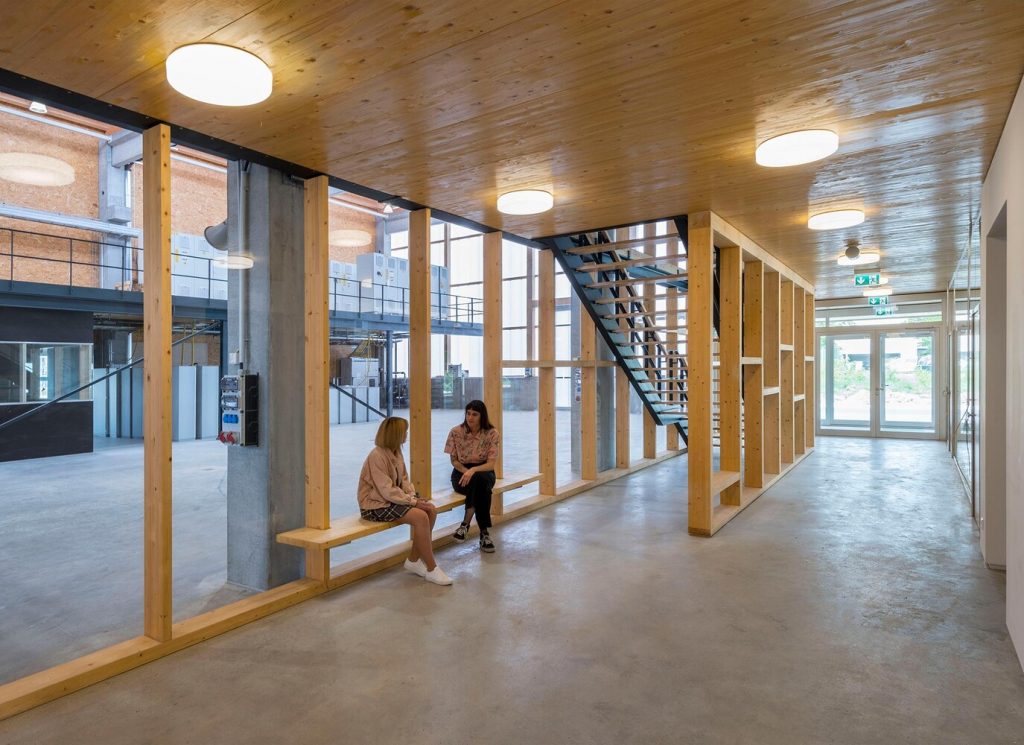
Building 688 at the Karlsruhe Institute of Technology (KIT) by Behnisch Architekten
Adjacent assembly areas for technical construction elements with large thermal loads are not part of the energy system of the building envelope but instead, with their slatted facade, ensure consistent heat removal and ventilation of the construction elements.
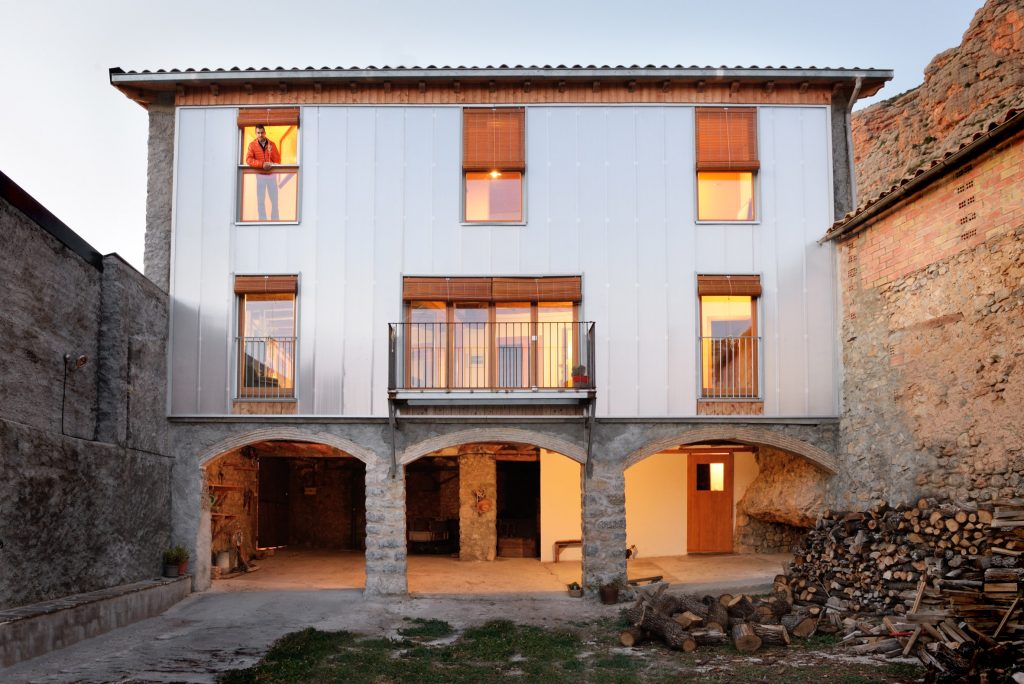
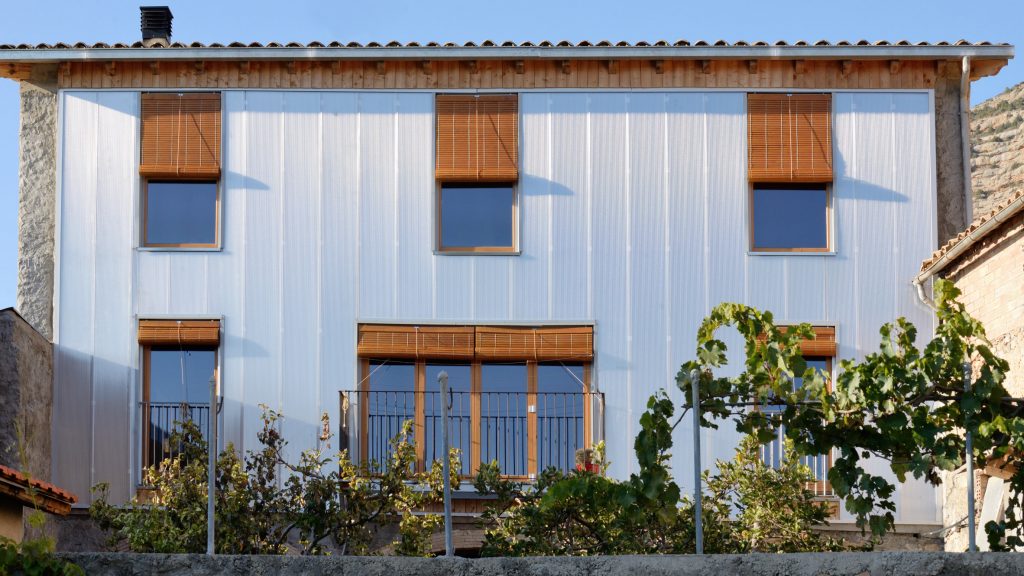
Casa Policarbonat by Josep Bunyesc
Adding a polycarbonate façade has allowed Lleida-based architect Josep Bunyesc to transform a house in the town of Pessonada, Spain into a low-energy building. The project aimed to improve thermal efficiency of the original building that featured stone walls without insulation, a south façade of poor structural quality and with small windows, and a new roof with insufficient insulation thickness.
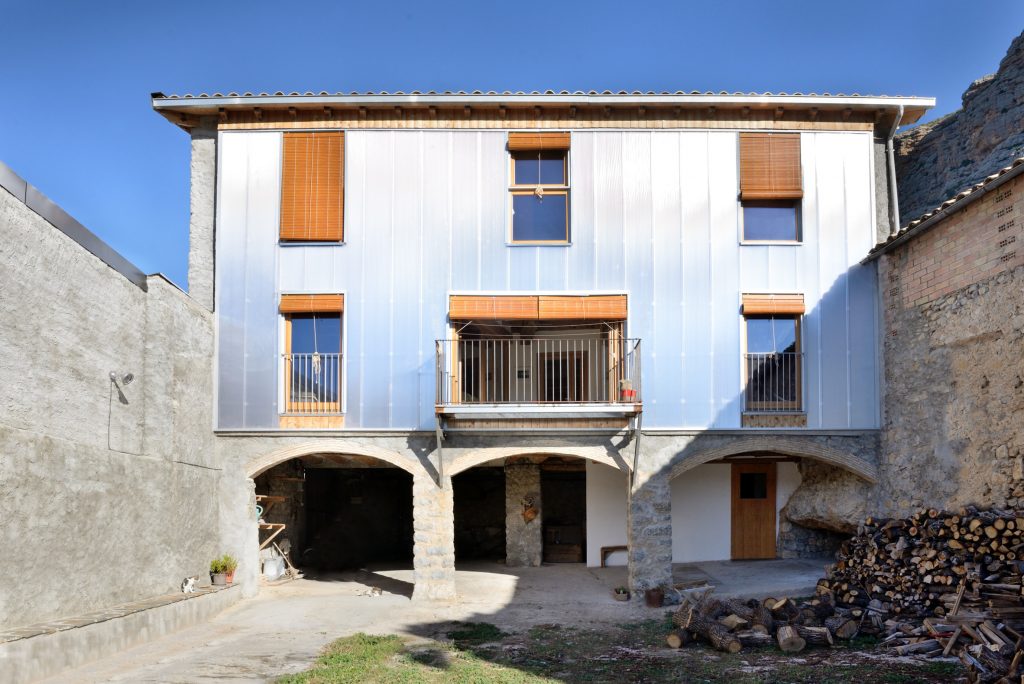
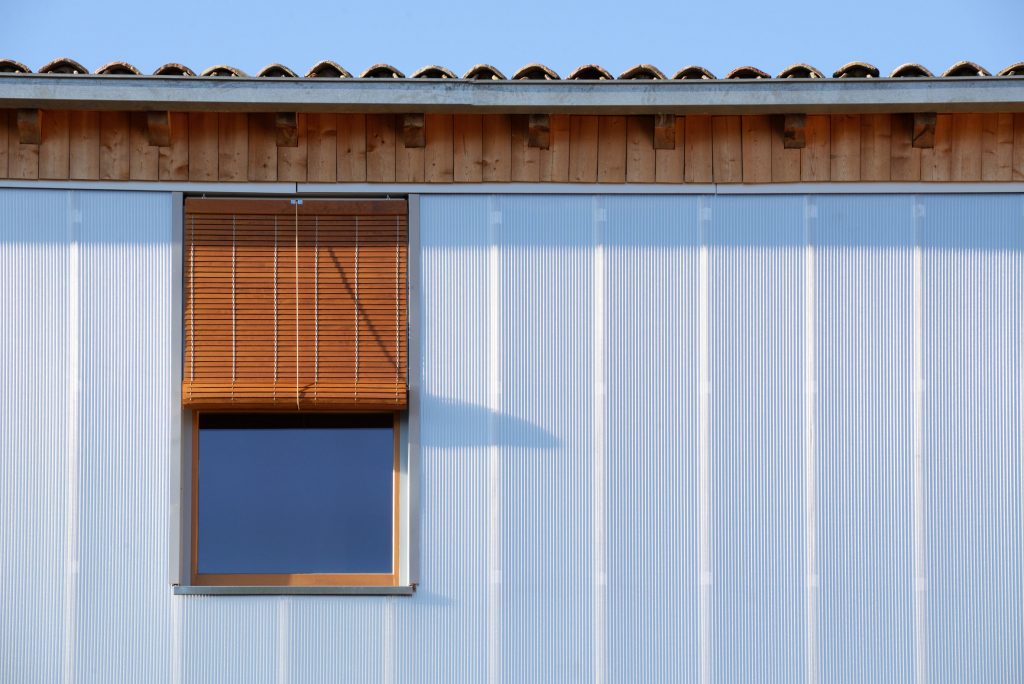
Casa Policarbonat by Josep Bunyesc
Due to the poor condition of the south-facing stone wall it was not possible to make windows much larger than the existing one, which made it difficult to capture the solar energy and increase the heat gains. Installing eight-layer polycarbonate panels to the outside of the south facade, the architect managed to turn it into a large solar thermal collector, allowing the building to passively store energy from the sun.
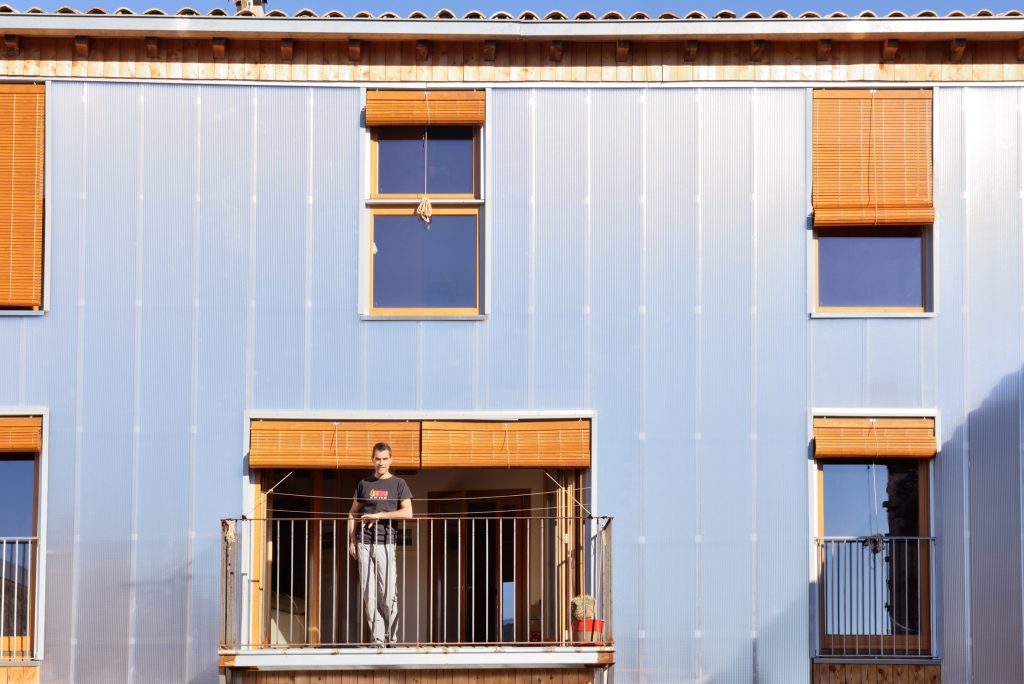
Casa Policarbonat by Josep Bunyesc
The polycarbonate facade acts as an external layer of insulation, but also gives the exterior wall a much greater thermal mass, allowing it to slowly release heat into the building over long periods of time. This results in a pleasant indoor climate. For example, when the outside temperature moves between -4°C and 10°C, indoors it does not drop below 20°C throughout the day without any additional heat input than the sun. While in winter, when the sun is low, a great amount of solar radiation is absorbed by the polycarbonate; in summer when the sun is higher, most radiation is reflected from its surface.
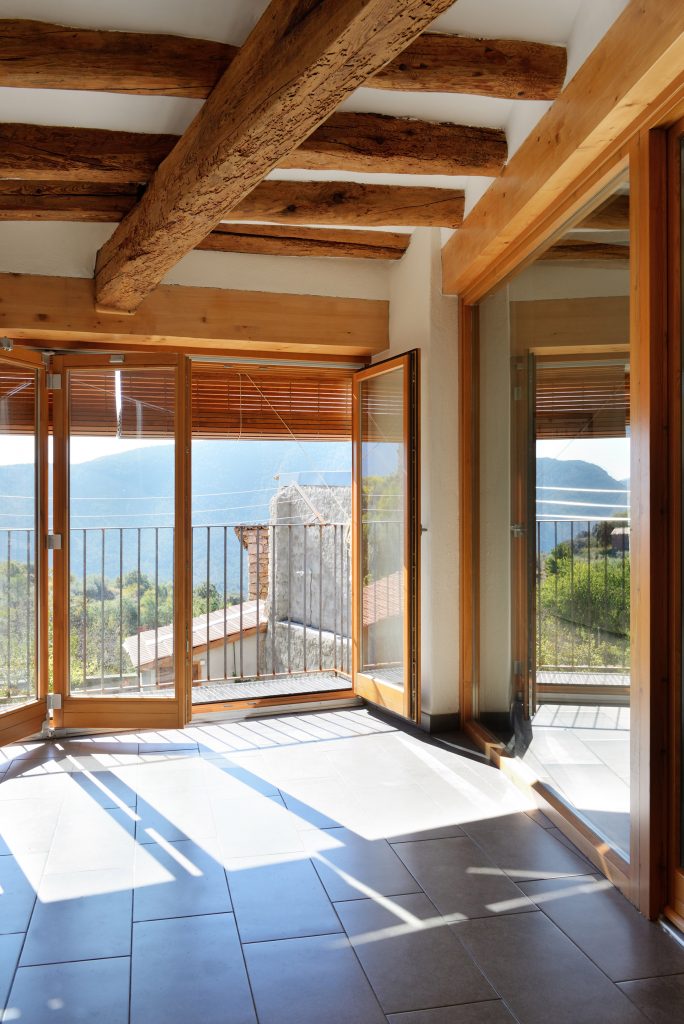
Casa Policarbonat by Josep Bunyesc
Besides, the polycarbonate facade gives the building a completely different appearance. But as it retains many of its original features, the house echoes the aesthetic of the surrounding buildings. The traditional features include balconies added to the first floor for drying clothes and external blinds for solar shading and natural ventilation.
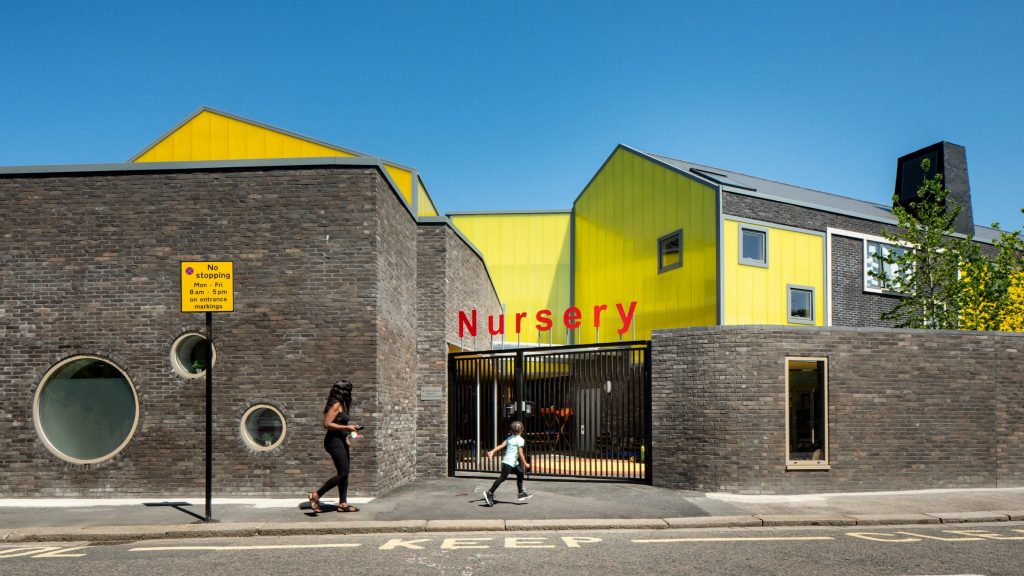
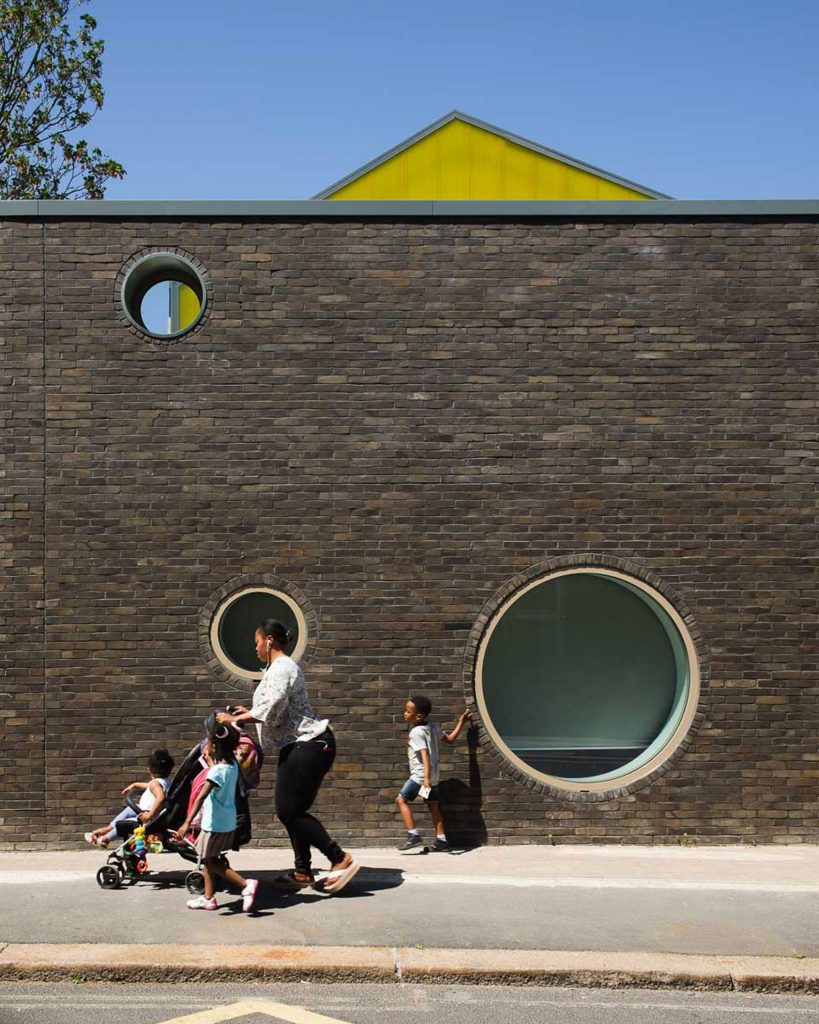
Bellenden Primary School by Cottrell and Vermeulen Architecture
London-based Cottrell and Vermeulen Architecture has used bright-yellow polycarbonate to contrast the grey brick walls punctuated with entrances, windows and portholes in the builidng for Bellenden Primary School and nursery in Peckham, south London.
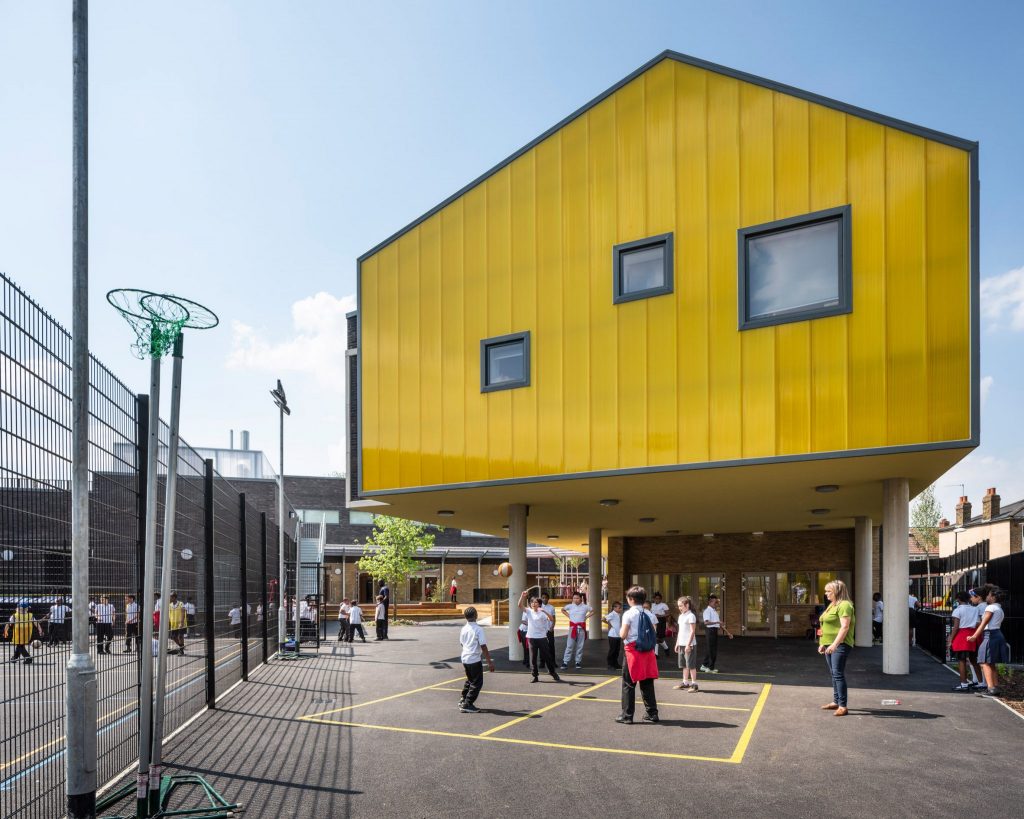
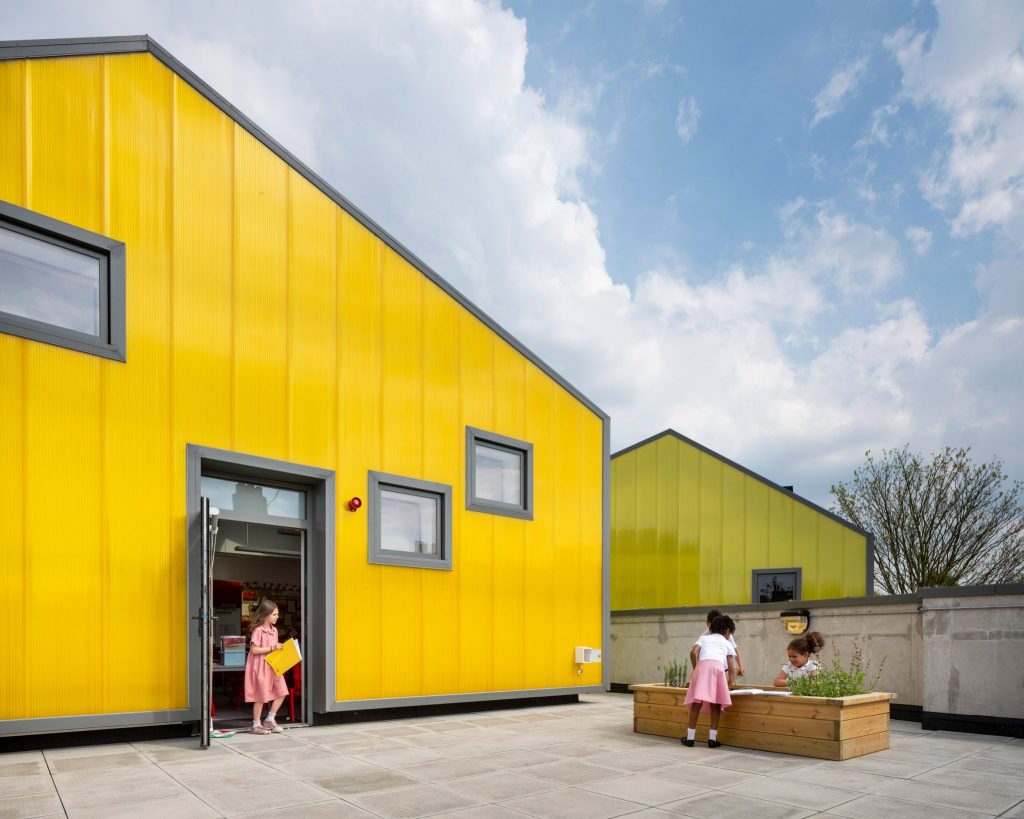
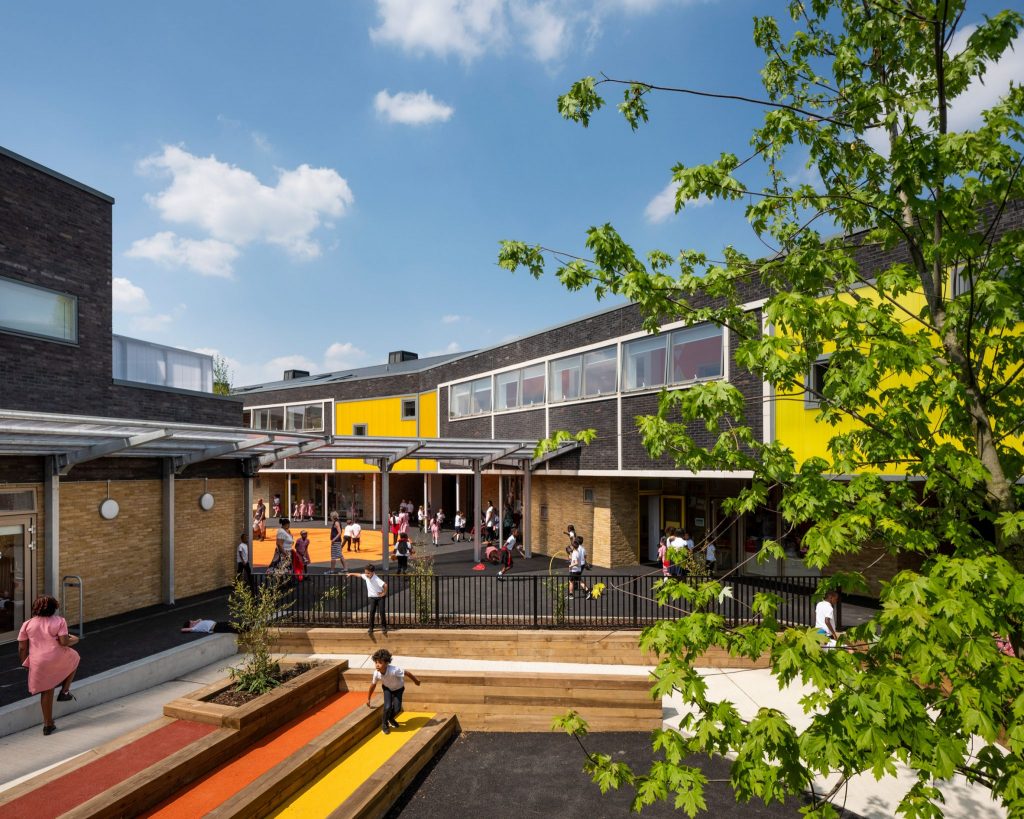
Bellenden Primary School by Cottrell and Vermeulen Architecture
While the school’s form, scale and material as well as its pitched roofs are designed to respond to the surrounding Victorian housing buildings, the vibrant yellow panels are added to draw attention to the building and turn it into a beacon for the community. Together with red lettering and a single red panel, the brightly coloured polycarbonate creates a bold identity for the school.
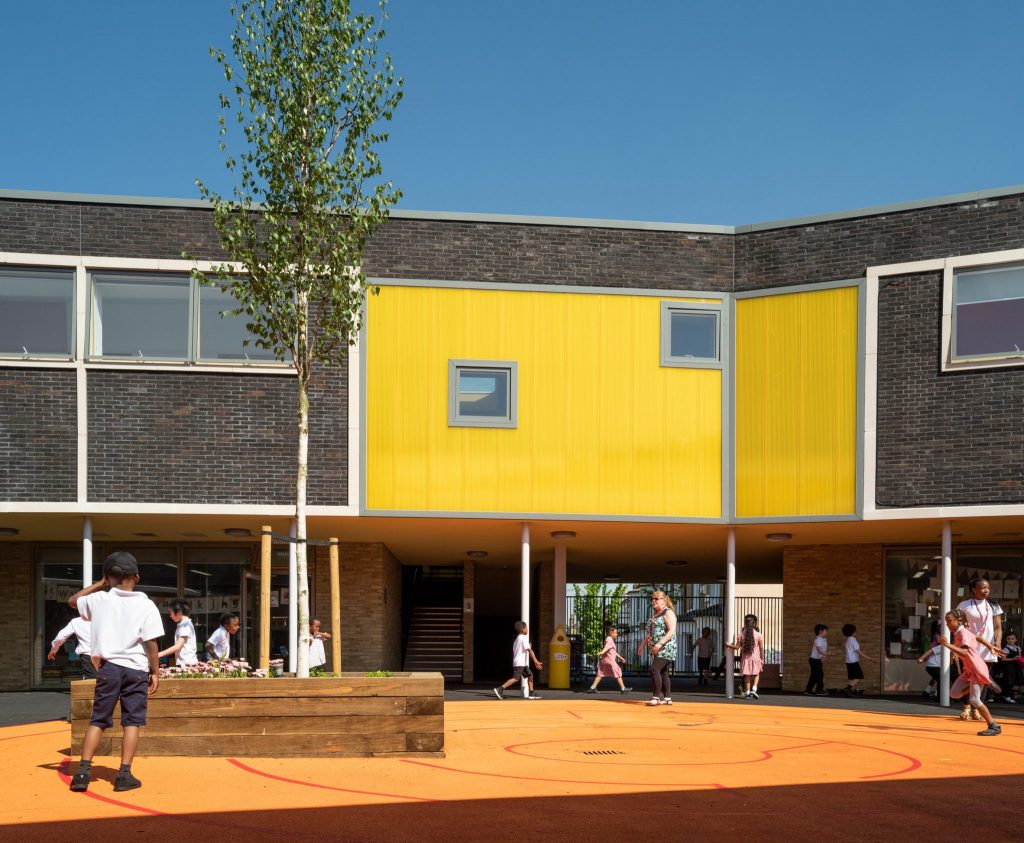
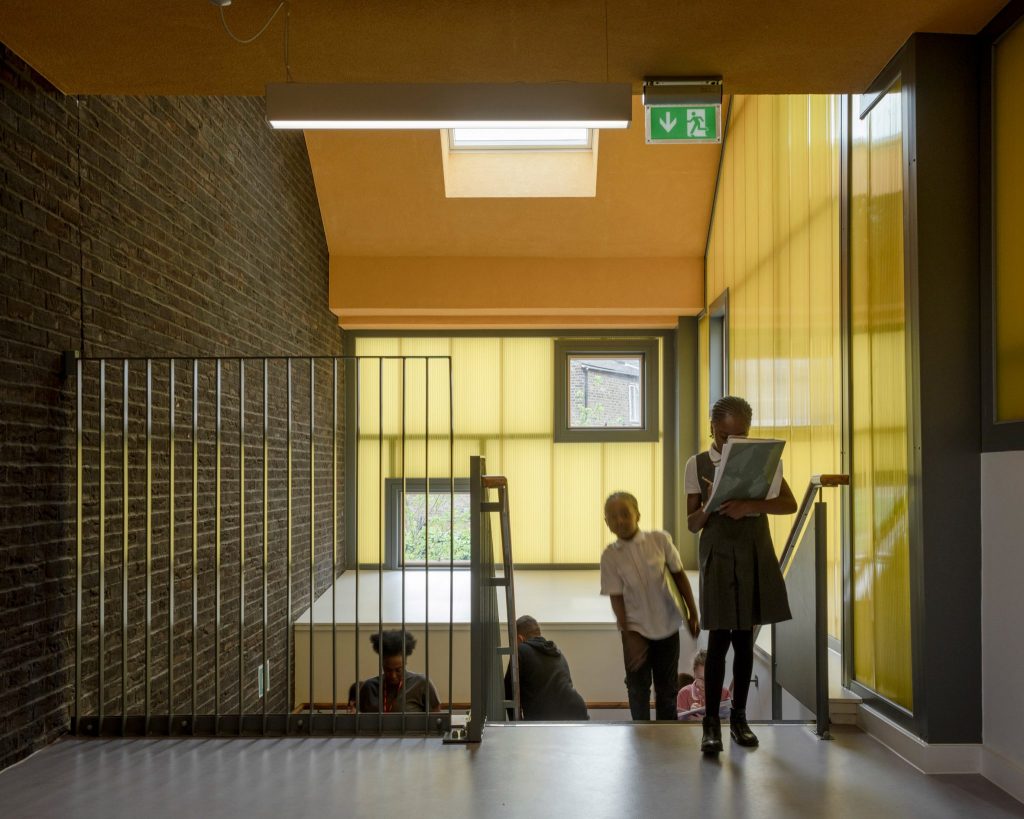
Bellenden Primary School by Cottrell and Vermeulen Architecture
The architects arranged the school’s buildings in a U-shape to enclose several outdoor play areas and courtyards.